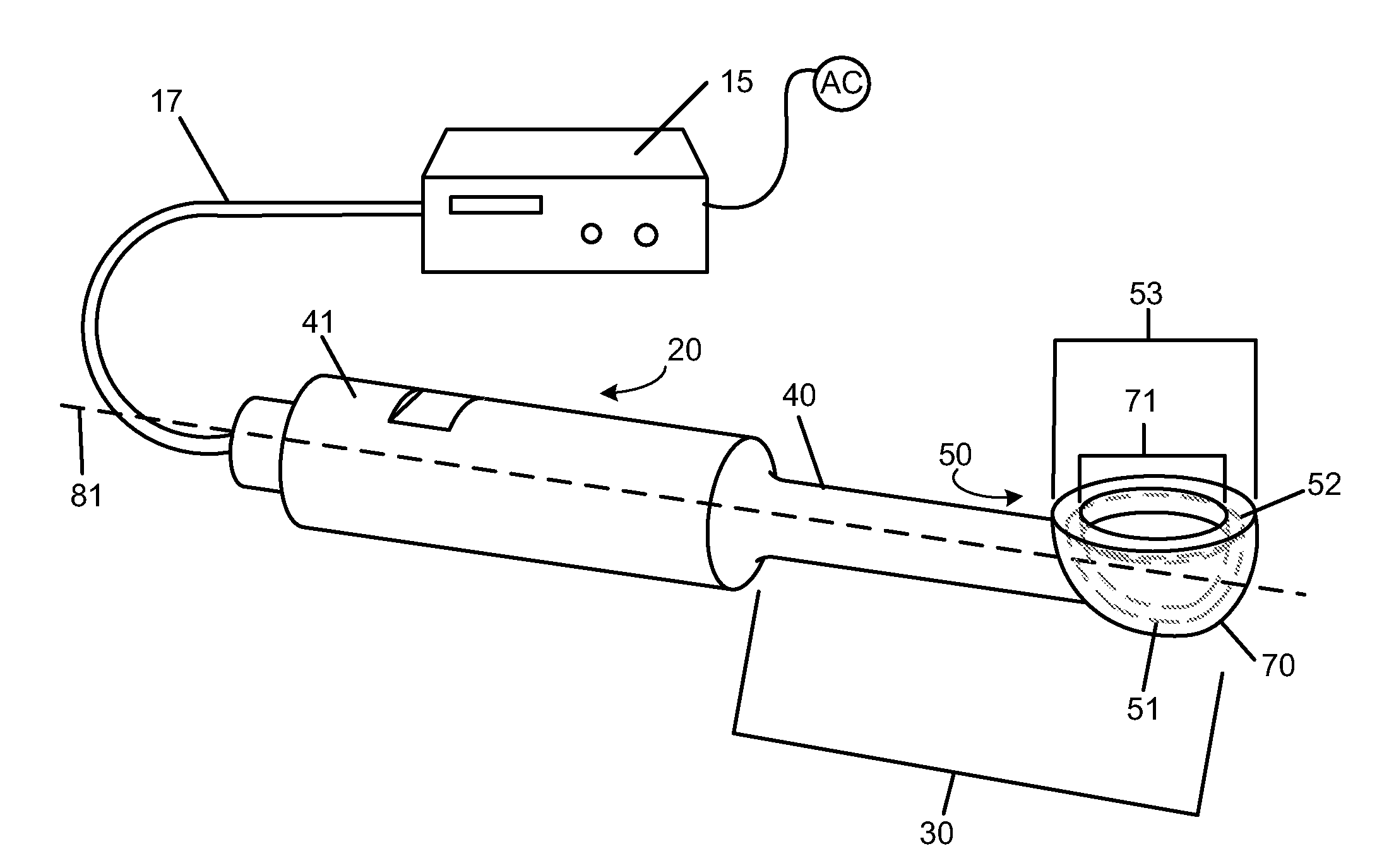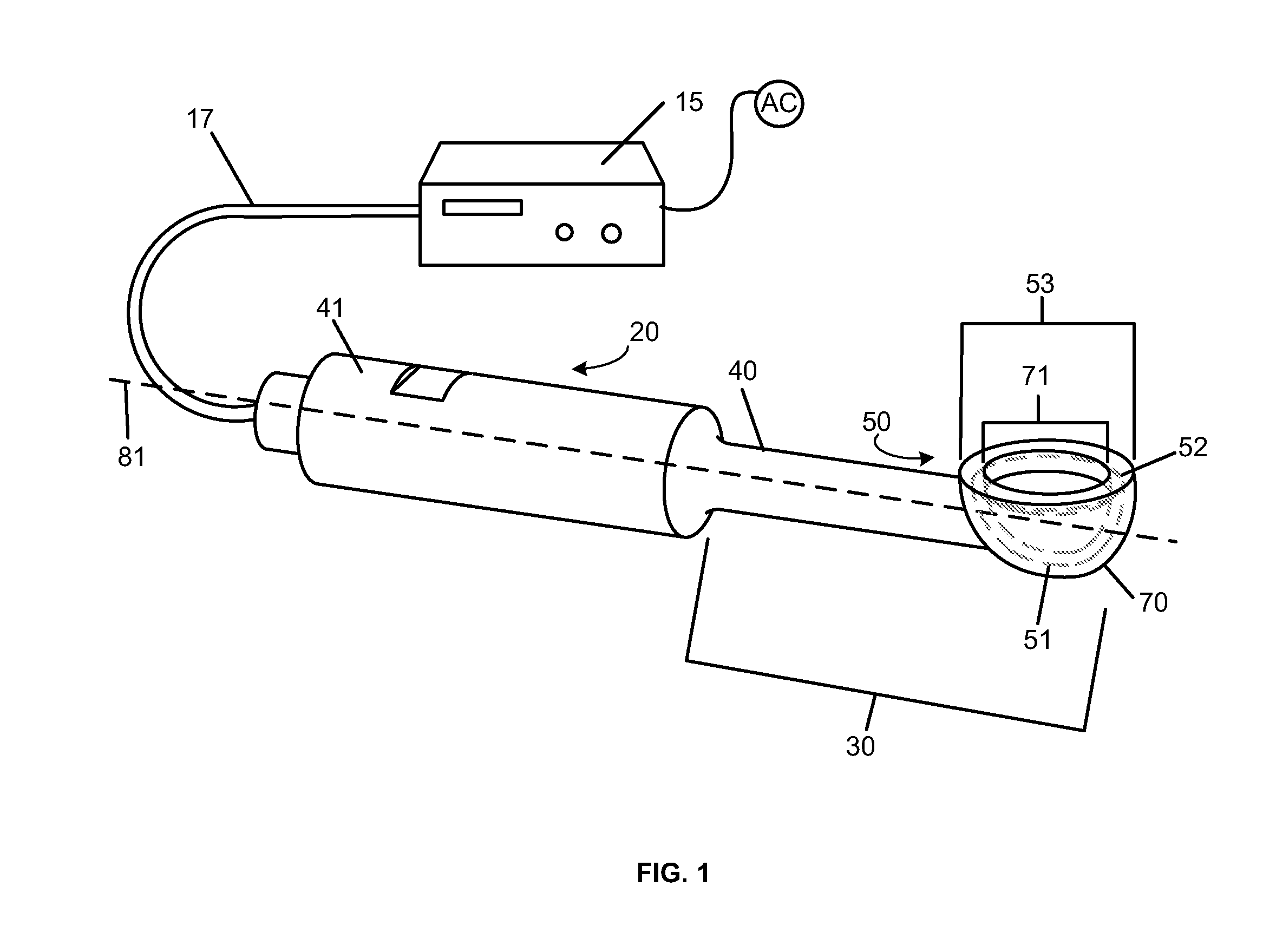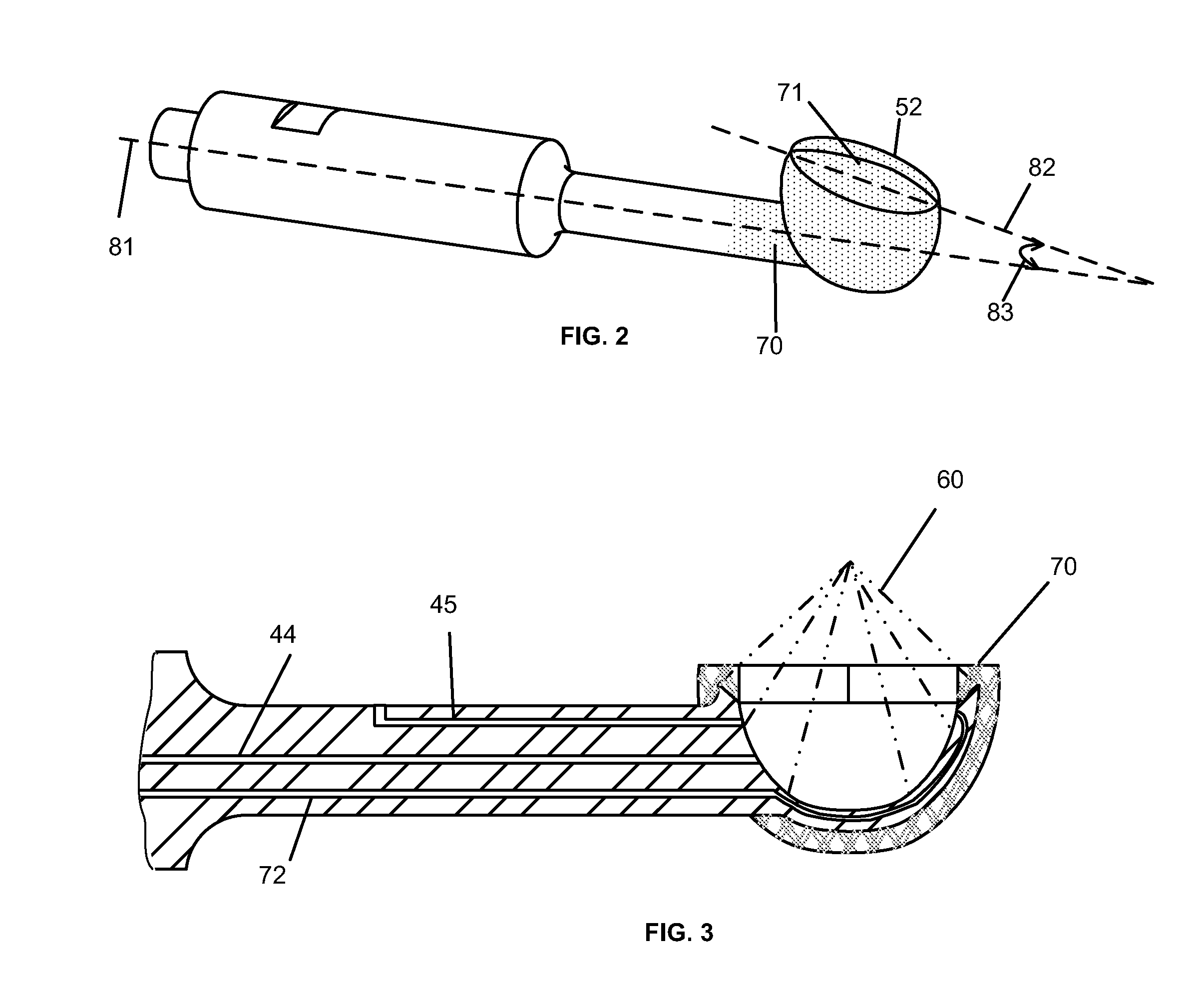Spider Vein Treatment Apparatus
a technology for spider veins and treatment equipment, applied in the field of spider vein treatment equipment, can solve the problems of ineffective treatment, significant morbidity, pain, swelling, etc., and achieve the effects of facilitating installation and removal of shields, facilitating easy replacement, and modifying ultrasound transmission characteristics to the patient's skin
- Summary
- Abstract
- Description
- Claims
- Application Information
AI Technical Summary
Benefits of technology
Problems solved by technology
Method used
Image
Examples
Embodiment Construction
[0020]The present invention is an ultrasound medical method and device capable of providing for the relatively non-invasive or minimally invasive treatment of spider veins, skin or other tissue treatment. FIG. 1 depicts one possible embodiment of the ultrasound medical apparatus of the present invention. The depicted embodiment of the present invention comprises an ultrasound generator 15 with an electrical cord supplying the ultrasound generator 15 its power, such as standard AC or battery power. The ultrasound generator 15 is in electrical communication with an ultrasound transducer 20 through a signal connector 17. A hand piece contains the ultrasound transducer 20 driven by the ultrasound generator 15, a housing surrounding the ultrasound transducer 20 provides a gripping surface and may cover portions of an ultrasound horn 30 connected to the distal end of the ultrasound transducer 20.
[0021]Ultrasound generator 15 and ultrasound transducer 20 are well known in the art and will ...
PUM
 Login to View More
Login to View More Abstract
Description
Claims
Application Information
 Login to View More
Login to View More - R&D
- Intellectual Property
- Life Sciences
- Materials
- Tech Scout
- Unparalleled Data Quality
- Higher Quality Content
- 60% Fewer Hallucinations
Browse by: Latest US Patents, China's latest patents, Technical Efficacy Thesaurus, Application Domain, Technology Topic, Popular Technical Reports.
© 2025 PatSnap. All rights reserved.Legal|Privacy policy|Modern Slavery Act Transparency Statement|Sitemap|About US| Contact US: help@patsnap.com



